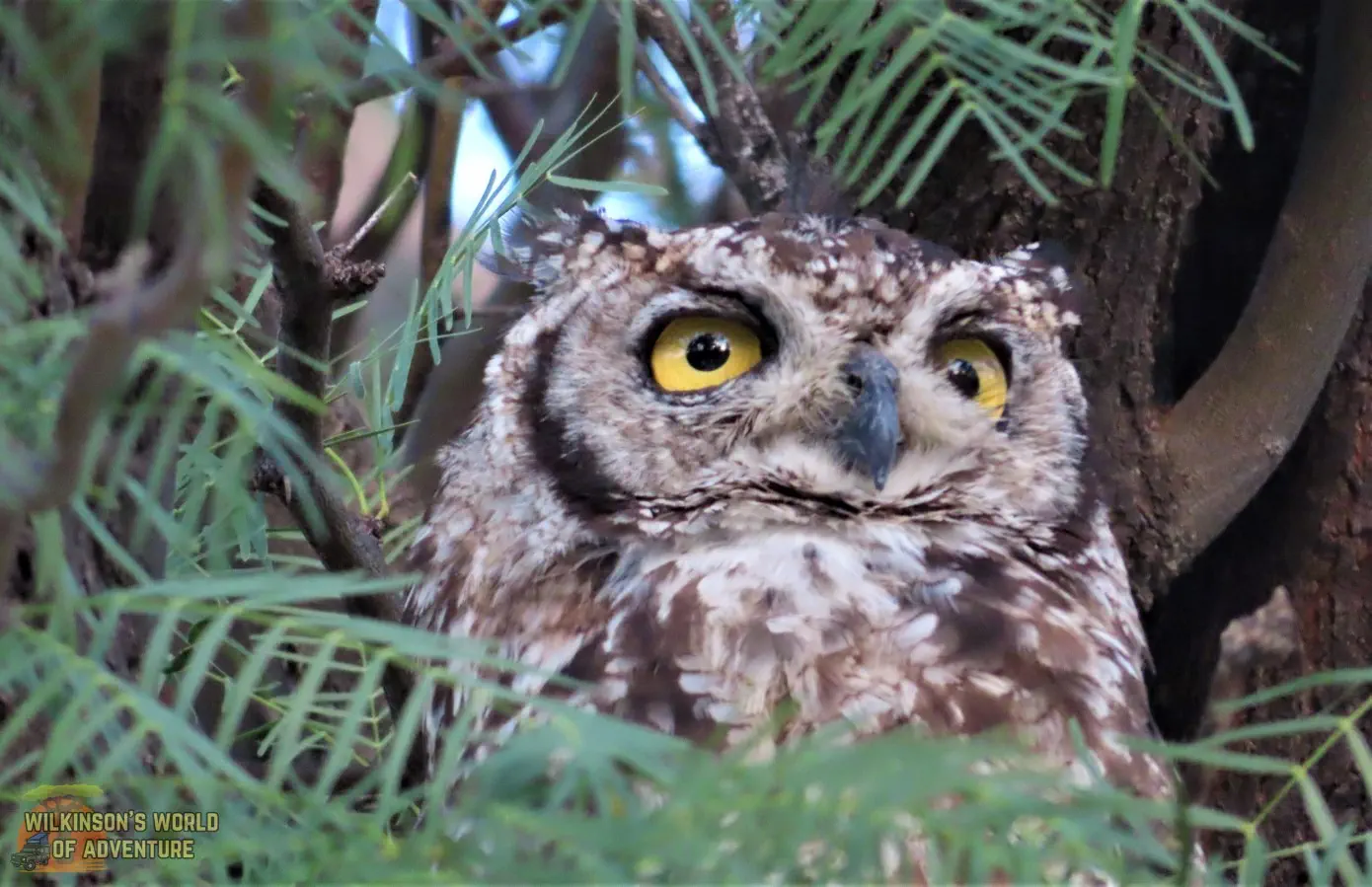Owls mean different things to different people. I personally love them, but for many who are superstitious, they are believed to be harbingers of death and misfortune. Perhaps you shape your reality of things by your thoughts because I have seen so many owls during my travels and they have done nothing but enhance my joy by their presence.
Best place to see owls
If, like me, you are keen on owls, then a visit to the Kgalagadi Transfrontier Park in Southern Africa is a must. They have a variety of owl species that breed in abundance in the park, and especially in the campsites. It is not uncommon to see trees in the campsites with up to five owls and they are easy to find because nature lovers are always photographing and pointing them out to everyone.
Breeding owls
What a delight it is to see the parents with their sweet babies in a tree right above your tent!! Obviously, you have to be there at the right time of the year to see the young owlets. Breeding usually takes place in late winter so that they can take advantage of the availability of food sources during the spring and summer months to raise their young. But owls are ubiquitous at all times of the year in Kgalagadi so no visit will go unrewarded with an owl sighting.
Hunting and diet
Being specially adapted to hunt in dark conditions, with keen vision, silent flight and incredible hearing, they are excellent nocturnal predators that regulate the populations of their prey species that are active at night. Their diet mainly consists of small mammals, like rats and mice, but they do also prey on birds, reptiles and insects and by so doing, they help maintain a balanced ecosystem and prevent the overpopulation of certain species.
Apart from rodent control, they fill an important ecological niche and can be indicators of a healthy ecosystem merely by their presence, as they are very sensitive to environmental changes. In some areas, they can even assist with seed dispersal by consuming small animals that eat seeds and then excreting any undigested seeds into different areas.
Greatest threat to owls
Humans pose the greatest threat to owls, as owls are often hit by cars at night, or killed by folks who use poison to control rats and mice. It was heartbreaking to see literally dozens of victims at a bird rehabilitation centre recently. For those that survive, many of their injuries render it impossible for them to be released back into the wild and these poor creatures sit forlornly in their cages for the rest of their lives.
If you can get past seeing owls through a mythological or superstitious lens and think of their significant role in the ecosystem, you will realize how essential it is to respect their habitats and do your bit for their preservation.



Recent Comments